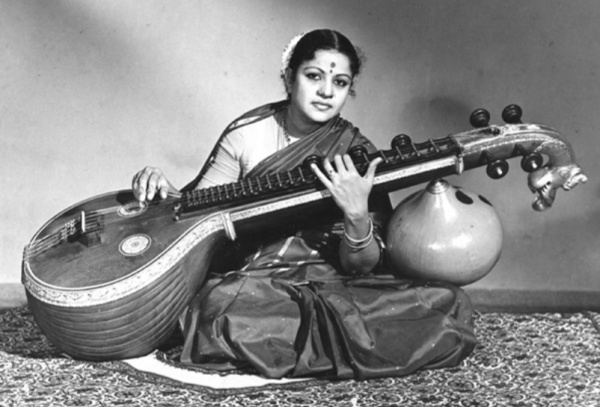
Is the story of MS Subbulakshmi from the Devadasi tradition into institution of the arts one of emancipation or cultural appropriation?
[caption id="attachment_11973" align="aligncenter" width="600"]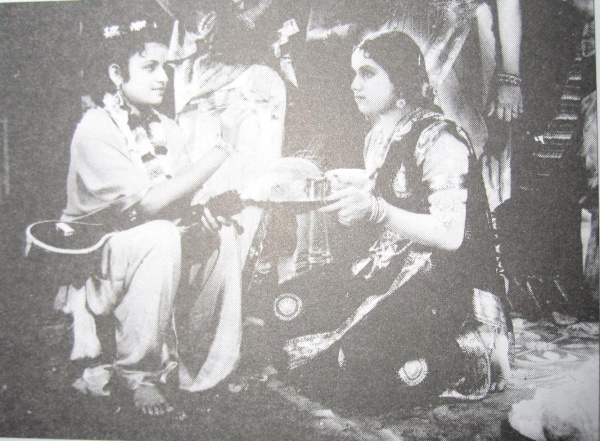 Pic – Wikimedia Commons[/caption]
Pic – Wikimedia Commons[/caption]
When I was recently asked to name women in South India who were or are considered inspiring figures, capable of influencing popular imagination, I was stumped. I could think of women who have been tremendously successful in various spheres of activity, but who have not necessarily pushed the boundaries for women’s equality and progress. If success was all that mattered, why would the question even be specific to women? And finally, I wondered if we can even begin to talk about specific women role models, without talking about how much their lives reflect the challenges of women as a whole.
The name of MS Subbalakshmi came up, the household name in virtually every Tamilian, if not South Indian, household. Her music cut across territorial, linguistic, and religious boundaries. She challenged the male domination of Carnatic music, marking the beginning of women establishing themselves as co-participants, if not equal participants in this space. The spark of a thought set me on a path of discovery of MS and her journey, and the underlying story of women themselves.
For many women, MS Subbalakshmi’s tale is one of emancipation and empowerment. Born to Shanmugavadivu in Madurai, generations of MS’s family belonged to the Devadasi tradition, a class that dedicated themselves to the service of the temple Gods. They formed an important part of the religious culture of Southern India, and received training in the arts. As the economic foundation of the system collapsed with the decline in the fortunes of the royal kingdoms, and their art became a means of survival for the Devadasis, the system came to be associated with sexual exploitation, and the art with exhibitionism.
The move to abolish the system, as also other repressive practices like Sati, came to be seen as significant measures of social reform. As TJS George records in his book MS: A Life in Music, there were opponents to the movement who feared that abolishing it would in the same stroke destroy the art forms as they had evolved. Out of this was born a movement to save the arts and the dance forms practised largely by the Devadasis. A product of this revivalist movement, which is also perceived as having sanitized the art form, is Bharatanatyam as we know it today.
MS walked into this institution of the arts, gradually appropriated by the upper classes of Madras society. While Shanmugavadivu herself had earned respect and fame in Madurai, and musicians who travelled to the temple town are recorded to have unfailingly visited her home, Madras – the new power centre of the art, beckoned. It seems natural that a person with the kind of talent and mesmerizing aura as MS had, would inevitably look to entrench herself in Madras, but with this shift came an abandonment of her background and origins. This was partly through the choices she made, which reflect not just a personal predilection, but also the times she lived in. The dominant force that determined the narrative of the lives of women in the country, including that of MS, was the patriarchy.
[caption id="attachment_11974" align="aligncenter" width="600"]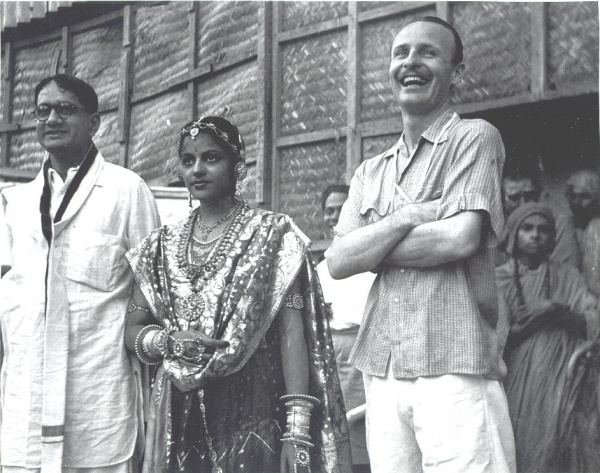 T. Sadasivam, MS Subbulakshmi and Ellis Dungan. Pic – Wikimedia Commons[/caption]
T. Sadasivam, MS Subbulakshmi and Ellis Dungan. Pic – Wikimedia Commons[/caption]
Partha Chatterjee, in his essay The Nationalist resolution of the Women’s Question illuminates this discourse. In the struggle for independence, as also in the building of the nation after, the identity of the woman became crucial to fashion an Indian consciousness. For the colonized, it was important that they followed the example of advanced western nations in the domain of the material. In the domain of the spiritual however, they would refuse to be colonized. Images of an ancient and glorious past were often invoked by them to create a national identity emphasizing their difference from that of the colonizer. In this exercise, the construction of the identity of the woman became crucial. The idea of the new Indian woman was constructed. She was an enlightened and progressive person, absorbing the benefits of western society such as a modern education but retaining her cultural essence, and therefore her unique identity distinct from the Western woman.
This narrative seems to play itself out graphically with MS. In a lot of ways, she embodied the new Indian woman. With her excellence in Carnatic music that represented the glorious traditions of an ancient Indian culture, she symbolized the idea of cultural superiority. The importance of this to the nationalist movement explains her co-option into it. With her, other women were drawn into the movement as well. The movies she starred in inevitably carried a strong patriotic message. Sadasivam, her Tamil-Brahmin husband drove her musical and cinema graphs, and as numerous biographical accounts record, her life itself. Sadasivam was a strong patriot, having gone to jail in revolt against the British Government. His patriotic zeal found a perfect mascot in MS. He scripted for MS the roles she played in the movies, and an identity that accorded with the nationalist discourse. She was celebrated as the new Indian woman—spiritually elevated, culturally distinctive, yet progressive and modern as she started inhabiting social and political spaces.
[caption id="attachment_11975" align="aligncenter" width="600"]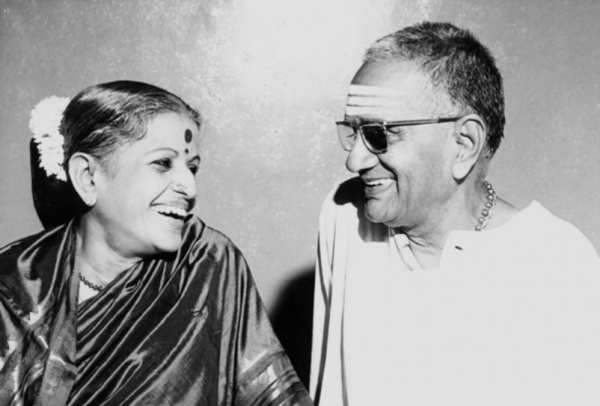 MS and Sadasivam Pic – www.msstribute.org[/caption]
MS and Sadasivam Pic – www.msstribute.org[/caption]
An important part of the popular narrative is of MS’s ostensible liberation from the life she had lived in Madurai. From a talented singer in the temple town, whom fate had consigned to the Devadasi system, she moved to the upper echelons of high culture in Madras. Implicit in this is the appropriation of MS’s identity by the dominant upper-classes. It is not unusual, even now, to hear of people suggest that despite being from the Devadasi community, MS was not quite like them, and there was something about her that was redemptive. The underlying message is that MS was merely not born into a higher caste, and that she was in every material sense a high caste woman, adopting a way of life that was theirs. This was a clear negation of her origin and roots. It also reflected the larger constructed notion that a low caste woman would live and behave in a certain way fundamentally different from the high caste woman. This distinction also played a crucial role in fashioning the new woman’s identity.
A necessary corollary to the image was the need to de-sexualize the woman. In the case of MS for instance, she has consistently, both during her life and after, been painted as a saint. This alludes to not only the high devotional content of her music, but also a certain image of the woman that sees her exploring sexuality only within the institution of marriage. Predictably, references to MS’s fondness for G.N. Balasubramaniam, the great musician, have been met with outrage. A more acceptable version of the story is that this was but a fleeting infatuation of her younger days, with the MS as we knew her being far too spiritual for desire to matter. The control over women’s sexuality was crucial for perpetuating the idea of the new woman. She was not promiscuous and vulgar. She would transcend the material and sensory, and define the core of ‘Indian-ness’.
[caption id="attachment_11976" align="aligncenter" width="600"]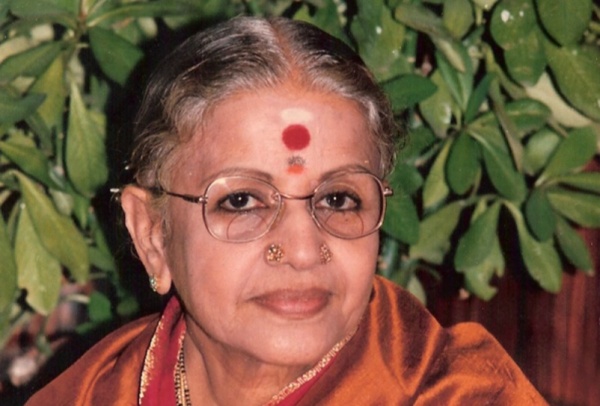 Pic – www.msstribute.org[/caption]
Pic – www.msstribute.org[/caption]
With this background, we are able to understand better the trajectory MS and her life took. It also reveals the extent to which the patriarchy influenced consciousness, and determined the path for women. There were equally, female contemporaries of MS herself who rebelled against the dominant order such as Balasaraswathi. Girish Karnad, the famous Kannada poet and actor, is quoted in TJS George’s book to have drawn a striking contrast between Balasaraswathi, who remained fiercely loyal to the Devadasi tradition on the one hand and MS [and Rukmini Devi] on the other. He is stated to have noted how MS’s spectacular career had much to do with the way she managed to shed all traces of her Devadasi past and transform herself into the perfect image of a Tamil Brahmin housewife.
The point is not to assess what MS as an individual could have done in shaping her identity. Her real story speaks to the circumstances of which she was a product, consciously or unconsciously. It also reinforces for us Indian women, the battles we still have to fight as the historical image of the woman lingers and endures.
-This article originally appeared on The Alternative and was written by Preeti Mohan.

























